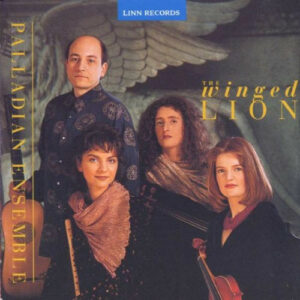Program: #97-04 Air Date: Jan 27, 1997
Preservation of this program is made possible by a generous grant from Wendall Wilson.
I. Chansons et Danceries: French Renaissance Wind Music (Piffaro). Archiv CD 0289 447 1072 4.
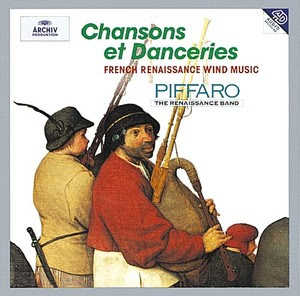
The selection draws on three genres. Firstly we have arrangements of popular French chansons made by the pioneering Venetian publisher Petrucchi (Josquin) and innovative anthologist-publishers such as Pierre Attaignant and Susato. To those are added a couple of transcriptions of more strictly polyphonic works by Willaert and Jean Maillard, while at the other end of the spectrum come popular dance tunes of the day from collections that include a suite culled from Jacques Moderne's important and wide-ranging Musique de Loye (ca. 1550). In several instances Piffaro has produced its own arrangements of dance tunes, not, I think, totally avoiding the familiar problem of introducing a shade too much twentieth-century sophistication in the process. But it would be not only churlish but absurd to be po-faced and purist when the playing of these seven splendid musicians is so professional and so full of zest. Above all there is a sense of sheer enjoyment in these performances that evokes memories of David Munrow's early Music Consort of London in its heyday.
Recording, notes, and presentation (all the sources are meticulously listed) fully match the very high level of the music-making.
II. Milán - Narváez: Music for Vihuela (Christopher Wilson). Naxios CD 8.553523.
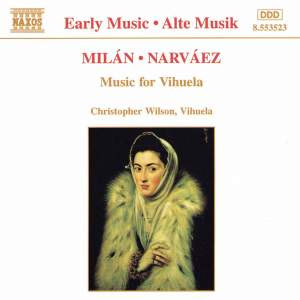
Fantasía for vihuela No 10 (02:07)
Fantasía for vihuela No 3 (01:57)
Fantasía for vihuela No 5 (02:08)
Fantasía for vihuela No 18 (03:11)
Fantasía for vihuela No 7 (02:18)
Fantasía for vihuela No 26 (03:41)
Fantasía for vihuela No 35 (03:11)
Fantasía for vihuela No 21 (03:00)
Pavan for vihuela No 5 (01:20)
Tento for vihuela No 1 (05:55)
Fantasia (quinto tono) (02:13)
Fantasia (tercer tono) (02:30)
Fantasia (segundo tono) (03:19)
Fantasia (quinto tono) (02:05)
Cum Sancto Spiritu (02:14)
Ya se asienta el Ramiro (01:58)
Paseávase el rey moro (01:57)
Fantasia (primer tono) (01:44)
III. The Winged Lion (Palladian Ensemble). Linn CD CKD 015.
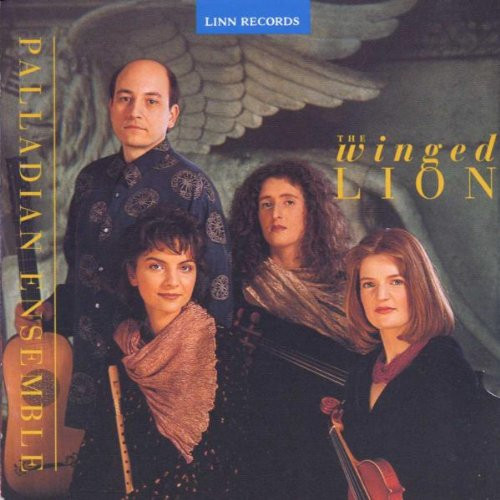
The Palladian Ensemble are extremely confident and artful musicians, and they play very well together. they are at their best as an ensemble of individuals. The Castello sonata with which they begin offers a perfect example of their approach: the quick sections sprightly and tartly articulated, the slower sections rhetorical, everyone has at least one moment to shine as a soloist, not least the theorboist William Carter, who accompanies divinely. Cavalli's Canzon from his Musiche sacrae of 1656 is performed with sensitivity and the little ground-bass section four minutes into it is sublimely realized, although an organ (called for by the composer) might have added an appropriate gravitas.
It should be pointed out that G. B. Vitali worked in Modena (where his Op. 7 was published in 1682) and probably never set foot in Venice. The Ciacona was originally scored for two violins and violone with spinet—which is not to say that it isn't successful on recorder, violin and cello with guitar. The booklet writer remarks in particular on the vogue for guitar in Venice, hence the inclusion of two very slight guitar solos by the mysterious (and probably not Venetian) Santiago de Murcia (fl.1700). G. B. Buonamente was a violinist who worked in Mantua, Parma and Vienna, but not Venice, although he did publish his 1626 collection there. The Palladian Ensemble bring his suite off with strong contrasts of sweet lyricism and highly articulated dotted and syncopated rhythms.
Marco Uccellini, also a violinist, pursued his career in Modena and later Parma, like Buonamente, he published his music in Venice. Rachel Podger performs the Sonata quarta (Op. 5) with due poise and virtuosity, accompanied by the theorbo. She and Carter are joined by the recorder player Pamela Thorby and the cellist Joanna Levine for the last three items, based on popular tunes (published in 1645, not 1642); these works have been recently recorded by Nicholas McGegan's Arcadian Academy on two violins (with cello, keyboard and guitar, Harmonia Mundi, 7/94). Thorby's commanding tone, in which hardly a tremor of vibrato is allowed to intrude, changes the balance in these works, which is clearly just the effect Vivaldi wanted in RV84 and RV100 (which, incidentally, calls for bassoon as the bass instrument). RV84 is a trio sonata, not a concerto, although the flute part is soloistic and the violin part ripieno-ish. The concerto character is again evident in the contrasting slow movement for flute and cello alone.
1 Sonata Duodecima 6:58
2 Ciaconna 2:59
3 Sonata Quarto 5:01
4 Concerto In F Major RV 100: Allegro 2:23
5 Untitled 2:47
6 Allegro 2:42
7 Suite: Gagliarda Seconda 1:42
8 Corrente Terza e Quarta 1:29
9 Brando Terza 2:58
10 Avanti Il Brando 1:02
11 Brando Quarto 1:23
12 Canzon 6:13
13 El Amor 2:28
14 La Jota 2:52
15 Sonata a Tre 6:21
16 Concerto In D Major RV 84: Untitled 2:51
17 Largo 2:48
18 Allegro 2:20
19 Aria Undecima Detta Il 'Caporal Simon' 2:05
20 Aria Decimaquarta Sopra 'La Mia Pedrina' 4:16
21 Aria Decimaquinta Sopra 'Le Scatola Da Gli Agghi' 1:59
IV. An Excess of Pleasure (Palladian Ensemble). Linn CD BKD 010.
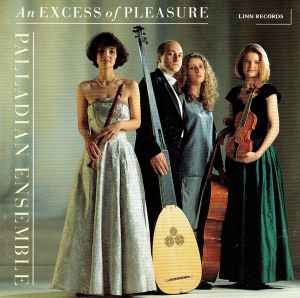
A considerable part of the success of this record lies in the ingenuity and knowledge with which the pieces have been chosen, and the unsuspected and at times quite entrancing corners of the early baroque that they reveal, from the seemingly effortless counterpoint of Purcell's Two in one upon a Ground to the almost shocking modernity of the concluding Bizzarie by Matteis. The Palladian Ensemble is just two years old, but they have already attracted considerable critical acclaim for their stylish and committed performances. Here they play with verve and enthusiasm, but that is not to imply lack of either polish and subtlety; at times virtuosic, at others gently affective, this is playing of a high order in terms of both technique and imaginative power.'
V. The Golden Dream—17th Century Music from the Low Countries (The Newberry Consort). Harmonia Mundi CD HMU 907123.
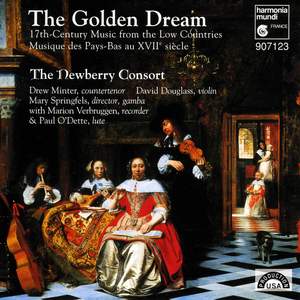
VI. The Queen’s Delight (The King’s Noyse). Harmonia Mundi CD HMU 907180.
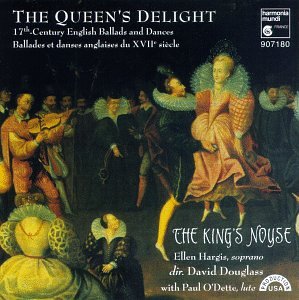
| The happy meeting / anon. -- Boatman / anon. -- Trip and go / anon. -- Barbara Allen's cruelty / anon. -- Preludium / William Byrd -- Browning my dear -- Hollis berrie / anon. -- Newcastle / anon. -- Newmarket / anon. -- Now, o now, I needs must part : to the tune of John Dowland's The frog galliard -- Coockow as I me walked / John Baldwin -- Sing care away : to the tune of Heart's ease / anon. -- Souches marche / anon. -- Emperor of the moon / anon. -- Tickle my toe / anon. -- I smell a rat : to the tune of Upon a summer's day / anon. -- Wilson's wilde / anon. -- Walsingham / John Marchant -- Begone, sweit night / anon. -- Strawberries and cream / anon. -- The Queen's delight / anon. -- Half hanniken / anon. -- Nottingham ale : to the tune of Lili Burlero / anon. |
VII. Girolamo Frescobaldi: Il Primo Libro da Capricci (John Butt, organ). Harmonia Mundi CD HMU 907178.
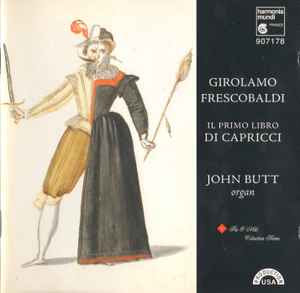
| 1 | Capriccio Sopra Ut, Re, Mi, Fa, Sol, La | 7:48 |
| 2 | Capriccio Sopra La, Sol, Fa, Mi, Re, Ut | 6:15 |
| 3 | Capriccio Sopra Il Cucho | 5:27 |
| 4 | Capriccio Sopra La, Sol, Fa, Re, Mi | 6:30 |
| 5 | Capriccio Sopra La Bassa Fiammenga | 4:16 |
| 6 | Capriccio Sopra La Spagnoletta | 4:58 |
| 7 | Capriccio Sopra L'aria "Or Chè Noi Rimena" | 3:47 |
| 8 | Capriccio Cromatico Con Ligature Al Contrario | 3:54 |
| 9 | Capriccio Di Durezze | 2:47 |
| 10 | Capriccio Sopra Un Soggetto | 4:24 |
| 11 |
Capriccio Di Obligo Di Cantare Le Quinta Parte
|
5:48 |
| 12 | Capriccio Sopra L'aria Di Ruggiero | 5:39 |
VIII. 150 anni di musica Italiana: da Pasquini a Frescobaldi (Rinaldo Alessandrini, harpsichord). Opus 111 CD 30-125.
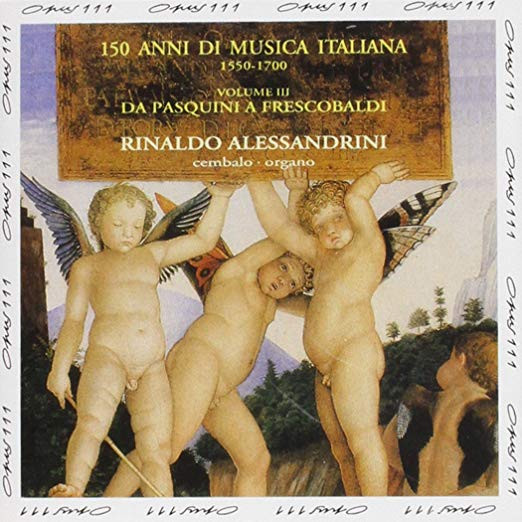
Giovanni Battista Fasolo: Benedictus et elevatio simul
Anonimo: Aria di Fiorenza
Bernardo Storace: Ricercare
Tarquinio Merula: Canzona
Emanuele Soncino: Cromatica
Girolamo Frascobaldi: Canzon detta la Pesenti
Gregorio Strozzi: Toccata di Passacaglia
Giovanni Picchi: Pass'è mezzo
Michelangelo Rossi: Toccata Prima
Merula: Sonata Cromatica
Frescobaldi: Capriccio
Frescobaldi: Canzona
Giovanni Salvatore: Ricercare Quarto
Adriano Banchieri: Battaglia
IX. Schmelzer: Violin Sonatas (Romanesca Ensemble). Harmonia Mundi CD HMU 907143
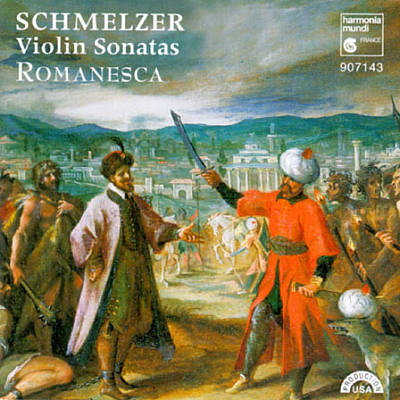
| Sonatae Unarum Fidium | ||
| 1 | Sonata IV | 9:45 |
| 2 | Sonata V | 10:13 |
| 3 | Sonata VI | 7:57 |
| 4 | Sonata, 'Cucù' ('Cuckoo') | 5:53 |
|
Sonata, 'Victori Der Christen' ('The Victory Of The Christians Over The Turks')
|
(9:37) | |
| 5 | Der Türken Anmarsch | 1:03 |
| 6 | Der Türken Belägerung Der Stadt Wien | 1:31 |
| 7 | Der Türken Stürmen | 1:57 |
| 8 | Anmarsch Der Christen | 1:46 |
| 9 | Treffen Der Christen | 1:03 |
| 10 | Durchgang Der Türken | 1:01 |
| 11 | Victori Der Christen | 1:14 |
| Sonatae Unarum Fidium | ||
| 12 | Sonata I | 8:34 |
| 13 | Sonata II | 6:13 |
| 14 | Sonata III | 7:28 |
X. A Distant Shore: Music of Bach, Weiss, and Kellner. (Paul O’Dette, lute). Dorian CD DOR 90242.
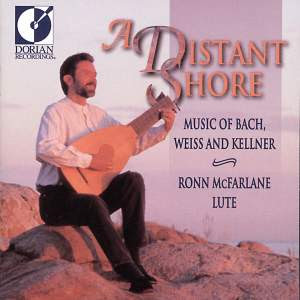
Composer Info
Josquin Desprez (1450 - 1521), Nicolas Gombert (1500 - 1556), Claudin de Sermisy (1490 - 1562), Claude Gervaise (1500 - 1555), Thomas Crecquillon (1480 - 1557), Philip van Wilder, Estienne Du Tertre, Adrian Willaert, Jean Maillard, Milán, Narváez, Geminiani, Matthew Locke, Biagio Marini, Purcell, Matteis, De Nicolas a Kempis, De Constantijn Huygens , De Daniel Norcombe, De Joachim van den Hove, De Jacob van Eyck, De Johann Schop, De Tarquinio Merula, De Nicolas Vallet, De Dirk Rafaelsz Camphuysen, De John Coperario, De Orlando Gibbons, William Byrd, John Baldwin, John Marchant, Girolamo Frescobaldi, Bernardo Pasquini, Giovanni Battista Fasolo, Bernardo Storace, Emanuele Soncino, Gregorio Strozzi, Giovanni Picchi, Michelangelo Rossi, Giovanni Salvatore, Adriano Banchieri, Andreas Anton Schmelzer, H.I.F. Biber, J.S. Bach, D. Kellner, S. Weiss.
CD Info
Archiv CD 0289 447 1072 4, Naxios CD 8.553523, Linn CD CKD 015, Linn CD BKD 010, Harmonia Mundi CD HMU 907123, Harmonia Mundi CD HMU 907180, Harmonia Mundi CD HMU 907178, Opus 111 CD 30-125 , Harmonia Mundi CD HMU 907143, Dorian CD DOR 90242
